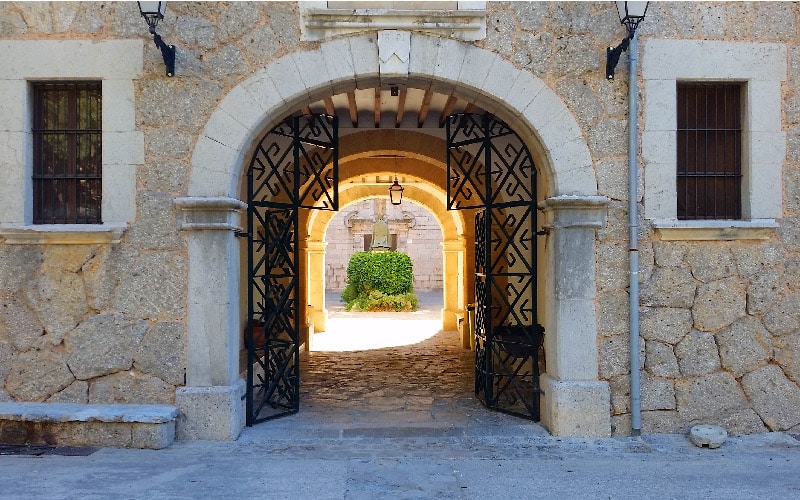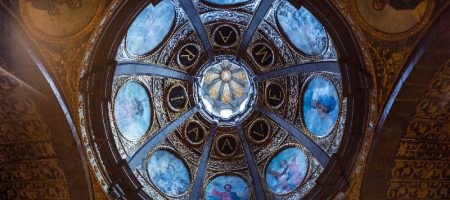The Lluc Sanctuary, which is the most important religious and pilgrimage place in Mallorca, is located in the Tramuntana mountains, more precisely in Torrente de Pareis, within the small municipality of Escorca.

The Lluc Sanctuary, which is the most important religious and pilgrimage place in Mallorca, is located in the Tramuntana mountains, more precisely in Torrente de Pareis, within the small municipality of Escorca.
The origins of the Lluc Sanctuary date back to the 13th century. According to the tradition, a shepherd found among the rocks the image of a small black virgin with the Christ child in her arms. In 1881, five centuries later, the Virgen de Lluc became the patron saint of Mallorca.
The first historic news about the monastery date from 1246 and mention a chapel. Already at that time it was considered a holy place and it was the pilgrimage centre par excellence in the island. The current monastery was erected in the 17th century, but it was remodeled during the 20th century under the direction of Antonio Guadí. Some remodellings included the main facade, which was decorated with Baroque themes.
The church of the monastery has received some honours such as the Royal Chapel by King Charles III in 1707 and the minor Basilica by Pope John XXIII in 1962.
The monastery can be reached on foot or by public or private transport. On the left of the Plaza dels Pelegrins is the City Council of Escorza. On the right side is the porxets, an arcaded gallery aimed to take in Pilgrims coming to the monastery. In the background is the facade of Lluc Sanctuary.

The complex is made up of different buildings. First of all is the “Acolliment”, a warehouse for religious and cultural meetings. Moreover, it provides information about accommodation and guidance for the trip.
The church was built between 1622 and 1691. It has a Latin cross plan with a nave and three lateral chapels. The dome of the crossing is decorated with all apostles. Furthermore, “Hail Mary”can be read in its central part.
It is also interesting the major altarpiece of Baroque style, made by Jaume Blanquer. In its central part is the image of the Virgen de Lluc, carved in stone in the 14th century and completely decorated. The image was restored in 1884 and some of its elements, such as the dress, were replaced.
Annexed to the basilica of the monastery is the Nueva Hostelería. It has an impressive modernist facade and eighty one rooms or cells. In this area you will also be able to visit the museum of the monastery, that has a varied endowment fund. Here it is also the historic archive that preserves the most important documentary evidence in Mallorca.
Lastly, we recommend you to walk around its botanic garden, where there are numerous native plants from Mallorca. For further information to make plans in Mallorca visit this website.

